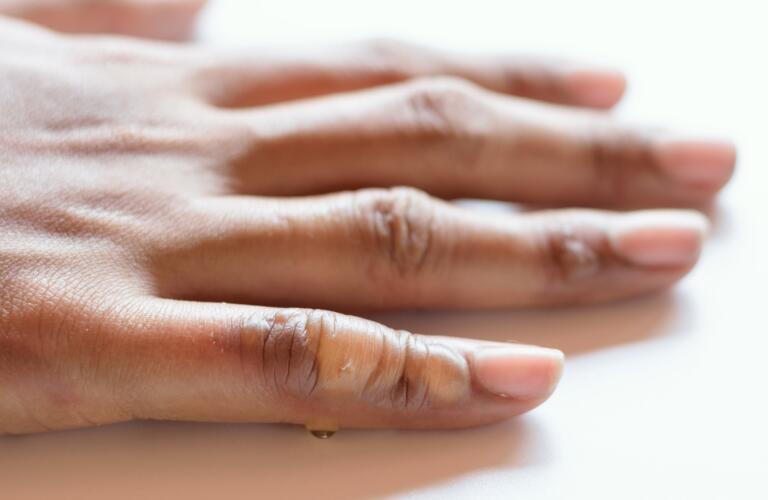

Always used a fixed guard around open fires in the house. Instead the fire should be smothered by covering the pan with a damp cloth. Never throw water over oil fires, such as in a chip pan, because this will cause a fire explosion that can have severe consequences. While accidents do happen, to minimise your risk of burns try the following tips: Be fire-conscious in the home Do not put any creams on the burn at this stage, but you can give the person simple pain relief such as paracetamol. Put cling film or a plastic bag over the burn before moving the person to hospital, but don't wrap the cling film tightly round a limb. First-degree burns, eg mild sunburn, may not require this treatment although it may help to soothe discomfort. Meanwhile keep the person warm, a lot of heat can be lost from large burns so put a blanket or clothing around the non-injured areas. Remove clothing or jewellery from the burned area but don't try to peel back any clothing that is stuck to the skin. Sometimes an hour of this treatment can be beneficial, however, in severe burns it is more important to get the person to hospital for treatment, so don't let this delay calling the ambulance. Keep the damaged area under running water for at least ten minutes and even longer if the pain has not stopped. The first thing to do is to limit the extent of the damage, and prevent the burn from becoming worse.
#Stages of burn healing for 2nd degree burn skin#
A skin graft is usually necessary for significant areas of third-degree burns. Damage to the sensory nerves in the skin can mean that third-degree burns may be quite painless as the burned skin lacks sensation to touch. The burned surface can appear normal, white, black (charred), or bright red from blood in the bottom of the wound. The tissues in all layers of the skin are dead. The damage is deeper and blisters usually appear on the skin. The damaged skin may be slightly moist from leakage of the fluid in the deeper layers of the skin.

The skin is red, painful and very sensitive to touch. Burns are classified according to the depth and extent of the skin damage, in the following way: First-degree burns So, what's the difference between first, second and third degree burns and what's the best first aid method? We look at the treatment, prevention and complications of burning yourself:īurns are damage to skin and deeper tissue caused by contact with fire, heat, electricity, radiation, or caustic chemicals. Sometimes, though, domestic burns can be much more serious and need urgent medical attention. We all burn ourselves from time to time, whether it's from a cooking accident, sunburn or running the bath too hot.


 0 kommentar(er)
0 kommentar(er)
